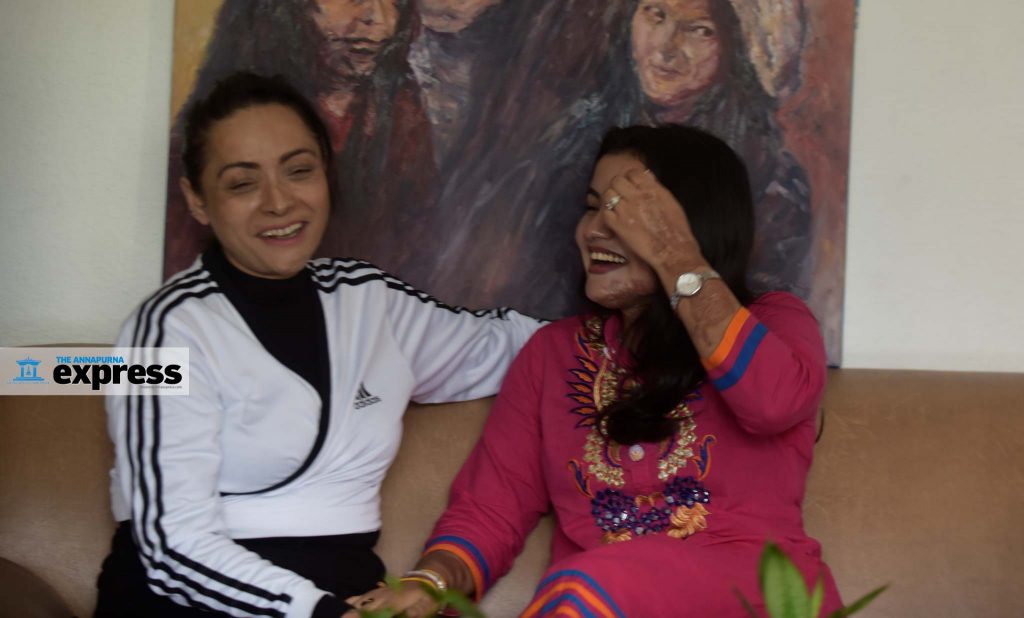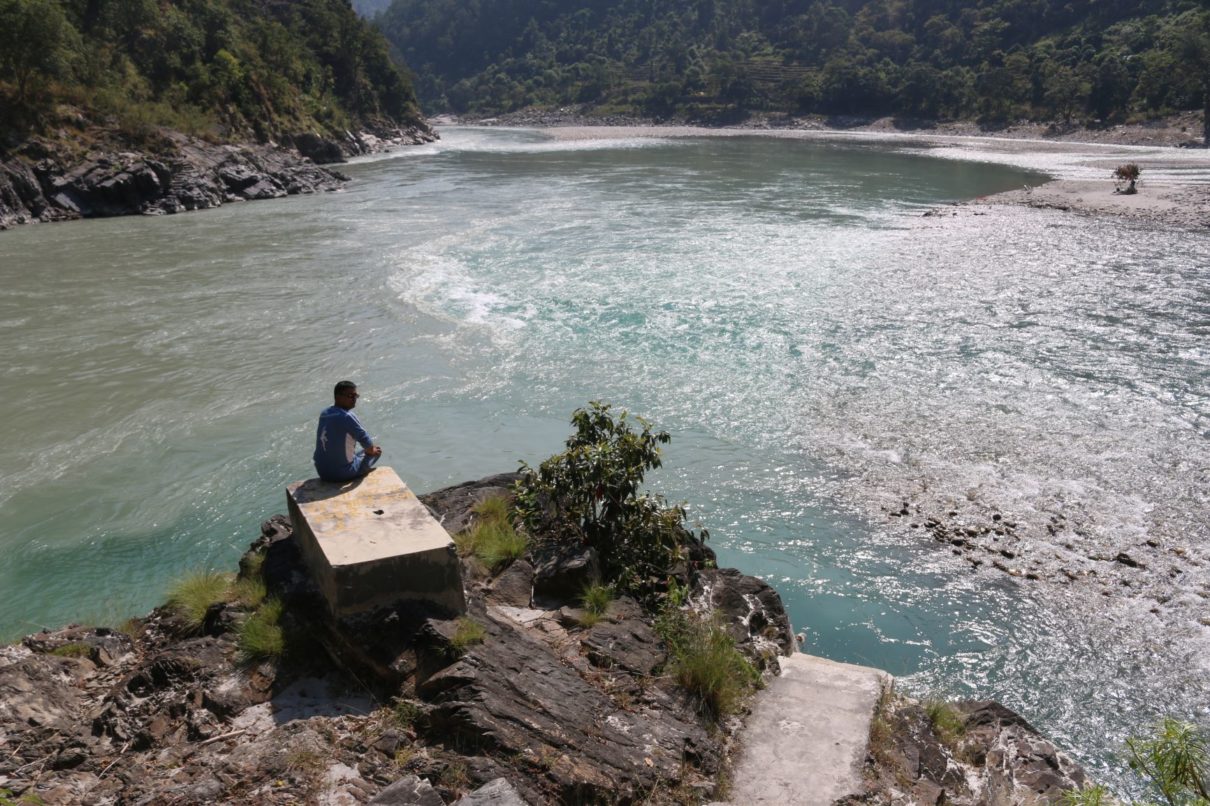“I was getting my paperwork ready to go to Cyprus for a babysitting job. I thought if I worked hard for a few years, I would be able to pay back my loans. But the government apparently isn’t allowing Nepalis women to go abroad for work,” says Mahat.
Rumi Rajbhandari, founder, Astitwa, a non-profit that works for the rehabilitation of acid and burn violence survivors, says Mahat is one of the stronger ones she has seen in her over a decade-long career. But now even Mahat is frustrated. She has worked hard to turn her situation around but nothing seems to work in her favor and that can be depressing at times, says Rajbhandari. “It’s harrowing to be judged by your scars and not your capabilities,” she adds.
Living with scars and disfigurement in a society that values beauty can be an ordeal. The many acid and burn violence survivors I have met over the years have all confessed to covering up and trying to hide from prying public eyes. This makes reintegration into the society almost impossible. Worse, acid and burn violence cases often occur in low-income families, and victims are mostly women. The cost of immediate treatment and multiple surgeries thereafter coupled with zero job prospects causes an even bigger economic setback.
“People look at us with curiosity or pity. For them, we are different. And our society has never been accepting of those who don’t fit in,” says Mahat. She tells me about a friend of hers, another survivor, who is working at a bank in Hetauda, the capital of Bagmati Province. She got the job a couple of years ago because of connections but there have been multiple efforts to compel her to leave. Her colleagues don’t include her in team lunches or photos. Mahat says her friend is upset, but continues to fight for her right and refuses to quit.
Quite a few acid and burn survivors work as domestic help in Kathmandu as well. But getting those jobs hasn’t been easy either. Rajbhandari recalls an incident when a burn survivor was rejected at three homes. In one, she was hired and fired in a day as the employer said “her granddaughter was scared of their new maid because of the ugly scars”. Working as a domestic help already comes with a fair share of challenges as many of the survivors don’t have full mobility in their limbs. Their scars stretch, itch, and burn, making it difficult for them to cook and clean.
 Jenny Khadka, who suffered 20 percent burns on her neck, chest, and arms when her husband threw acid on her after she refused to go back home with him, says she is tired of the government’s empty promises. Promises of justice and jobs for the victims are made when there’s news of an acid or burn violence but it’s conveniently sidelined when the media furor dies down. “The government, so far, hasn’t done much to ease our sufferings. It would be foolish of us to keep hoping,” says Khadka with a shrug and a smile.
Until recently, Khadka was employed at Kumari Bank Limited, at its Bafal branch in Kathmandu. After two extensions of six months each, she is now jobless. The branch manager apparently wants her back but she hasn’t heard from her former employers yet. Employing acid and burn survivors is good for the company’s profile, she says. Once that goal is achieved, survivors are dispensable. “My colleagues were nice to me. But there wasn’t a single client who didn’t ask me what had happened to me,” she says. “She has such a pretty face, too bad about the scars,” was something whispered about her on a regular basis.
Astitwa conducts training and workshops on jewelry-making, pottery and other informal skills. They sell the products made at various school and college fairs and to individual customers through online orders, says Sampada Uprety, program coordinator. The idea is to ensure survivors have some cash coming in as 20 percent of every order goes to the one who works on it. But this, Uprety adds, is by no means a regular thing. Orders are few and far between. It doesn’t fetch a stable income.
Kamal Phuyal, sociologist, talks about the theory of the three Ps—Power, Property, and Prestige—while discussing survivor’s reintegration. These are essentially what every human being strives for, he says. But in the case of most acid and burn victims, there is a lack of all three from the very beginning. “Attaining one of the three Ps will empower them and help them achieve the other two. Organizations working for acid and burn victims and the government must join forces to generate economic opportunities,” says Phuyal.
Phuyal plans to help Astitwa train Khadka to become a counselor. He says she has the potential to do well in the sector because of her own experiences, despite not having studied much. This, he believes, will establish her place in the society. Rajbhandari, on the other hand, adds she sees many changes in survivor’s attitude to life when they can earn. Being financially independent frees them from their abusers too, she says, as having nowhere to go, many victims continue to live with their husbands or in-laws.
“Money plays an important role in reestablishing their self-worth. But when jobs are difficult to come by, when they are looked at and rejected, it has a deep psychological impact that is worse than the trauma they went through when they were burnt,” says Rajbhandari. Mahat dreams of survivors like her coming together and starting something of their own—similar to the Sheroes Hangout—to create jobs for themselves. But then she isn’t hopeful it would work in Nepal. “The fact is people are still largely disgusted by us,” she says.
Jenny Khadka, who suffered 20 percent burns on her neck, chest, and arms when her husband threw acid on her after she refused to go back home with him, says she is tired of the government’s empty promises. Promises of justice and jobs for the victims are made when there’s news of an acid or burn violence but it’s conveniently sidelined when the media furor dies down. “The government, so far, hasn’t done much to ease our sufferings. It would be foolish of us to keep hoping,” says Khadka with a shrug and a smile.
Until recently, Khadka was employed at Kumari Bank Limited, at its Bafal branch in Kathmandu. After two extensions of six months each, she is now jobless. The branch manager apparently wants her back but she hasn’t heard from her former employers yet. Employing acid and burn survivors is good for the company’s profile, she says. Once that goal is achieved, survivors are dispensable. “My colleagues were nice to me. But there wasn’t a single client who didn’t ask me what had happened to me,” she says. “She has such a pretty face, too bad about the scars,” was something whispered about her on a regular basis.
Astitwa conducts training and workshops on jewelry-making, pottery and other informal skills. They sell the products made at various school and college fairs and to individual customers through online orders, says Sampada Uprety, program coordinator. The idea is to ensure survivors have some cash coming in as 20 percent of every order goes to the one who works on it. But this, Uprety adds, is by no means a regular thing. Orders are few and far between. It doesn’t fetch a stable income.
Kamal Phuyal, sociologist, talks about the theory of the three Ps—Power, Property, and Prestige—while discussing survivor’s reintegration. These are essentially what every human being strives for, he says. But in the case of most acid and burn victims, there is a lack of all three from the very beginning. “Attaining one of the three Ps will empower them and help them achieve the other two. Organizations working for acid and burn victims and the government must join forces to generate economic opportunities,” says Phuyal.
Phuyal plans to help Astitwa train Khadka to become a counselor. He says she has the potential to do well in the sector because of her own experiences, despite not having studied much. This, he believes, will establish her place in the society. Rajbhandari, on the other hand, adds she sees many changes in survivor’s attitude to life when they can earn. Being financially independent frees them from their abusers too, she says, as having nowhere to go, many victims continue to live with their husbands or in-laws.
“Money plays an important role in reestablishing their self-worth. But when jobs are difficult to come by, when they are looked at and rejected, it has a deep psychological impact that is worse than the trauma they went through when they were burnt,” says Rajbhandari. Mahat dreams of survivors like her coming together and starting something of their own—similar to the Sheroes Hangout—to create jobs for themselves. But then she isn’t hopeful it would work in Nepal. “The fact is people are still largely disgusted by us,” she says.











